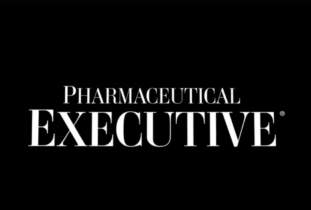Experts forecast a global semiconductor revenue decline in 2023. An uncertain economy, weakening demand, and high material costs lead to longer sales cycles with continual margin pressure. While high-tech and semiconductor manufacturers can’t solve macroeconomic challenges, they can optimize their revenue strategy to guard against price erosion.
Strategic pricing, accurate channel data automation, and sales agility all protect revenue streams. The following strategies can mitigate the impact of eroding prices and improve profitability.
Improve Commercial Data Automation
The high-tech industry is highly competitive, driven by a rapid pace of innovation. Companies continuously advance modern technology, but with this comes more SKUs to manage and shorter product lifecycles. There are opportunities to sell differentiated value with every new product, with up-selling and cross-selling in the mix, but the downside is an increasing downward pricing pressure. Any product lead times or demand fluctuation pose additional complications to the complex supply chain and can drive up prices. Because the channel is a vital discipline for any high-tech manufacturer, they must track business success as their products are sold all around the globe.
Companies can struggle to gain visibility into what is sold where, hindering their ability to actively manage revenue. Without visibility into demand, inventory, and end-customer-purchased products, it’s hard to tell if your go-to-market strategy has paid off.
Manufacturers need a system to ingest data from every touchpoint along the product lifecycle to illuminate factors impacting value and price. Artificial intelligence (AI) can help track business transfers and associated data points to monitor and anticipate demand fluctuations.
Combining sales data, channel and regional demand, incentive and rebate payments, trends, and contracts into a centralized data repository enables companies to create more precise forecasts. Analytics synthesize information into actionable business insights. With the right insights, you can drive the best deals.
Effectively Manage Pricing
Pricing is the key lever for top- and bottom-line growth, resulting in more sales and product distribution. A 1% price improvement can create an 11% improvement in operating margin when total costs remain unchanged.
Manufacturers should set pricing strategies based on a detailed analysis of margin targets, market segments, regions, product lines, demand, and route-to-market or channels. The data inform standards and expectations, enabling salespeople to provide optimal quotes and negotiated contract and agreement pricing.
Customers will be asking for a reduced rate. You can use tactics to avoid dropping prices. For example, you can provide another product from your portfolio with similar features at the requested price or a better gross margin. Other ways to combat a discount request are reviewing the design utilization, volume compliance, and any applicable incentive or rebate programs.
Once the deal is signed, pricing does not end. The finance department needs to manage the back end, working from the point of sale all the way through channel management and incentives, to sort out the net price. Accomplishing this can be tricky, due to widely varied contracts with nuanced clauses. Inaccurate invoicing wastes significant time, money, and goodwill.
Companies need the ability to merge all pricing, quoting, opportunity, and point-of-sale information into meaningful workflows for intelligent commercial automation. Managing this data with spreadsheets thwarts progress. Data may be overlooked, misplaced, outdated, or inaccurate, on top of the extensive time required to locate and analyze the required figures manually.
An AI-powered, centralized revenue management system accelerates effective price management and execution through continuous, automated workflows and algorithms. With visibility into the entire contract portfolio, you can quickly identify the applicable purchase price. External variables, historical transaction and channel data, customer, product, and corporate objectives can be taken into account to help calculate the right price as market conditions shift. The ability to quickly gather and analyze data provides pricing accuracy and agility, improves contract yield, and reduces management overhead.
Support Sales Efficiency and Effectiveness
Automation improves the sales and negotiation process by using real-time business intelligence to generate competitive quotes aligned with strategic pricing tied to corporate objectives. By dramatically reducing quote cycle time, sales reps can quickly respond to new opportunities and close more business.
A revenue optimization and compliance solution can evaluate and approve proposals based on history, related opportunities, design registration activities, and end-customer channel data to reduce the rate of price erosion. Additionally, it allows the sales and channel teams to identify rebates applicable to the specific deal. This information is easily available when executing an agreement, quote, or order, so the sales team ensures they are not giving away too much. These functionalities accelerate sale velocity by increasing the quote-to-order conversion rate and simultaneously providing the best price fit to market.
Manufacturers can simplify business activities by extending processes to their channel ecosystem, including design registrations, special pricing, incentives or rebates, and any partner data type to track against performance.
Data drives revenue optimization and compliance
Companies lacking access to modern data and analytics tend to have failed compliance across the channel and contracts, in addition to unrecognized revenue optimization opportunities. Automation harnesses data to uncover business insights that guide all of our commercial activities. Robust insights enable the sales team to quickly close deals with informed, competitive prices. Finance can accurately reconcile the right price to avoid over-payment and increase cash flows, and supply chain operations can manage inventory across the globe for effective product delivery.
Chris Shrope leads high-tech product marketing at Model N.













